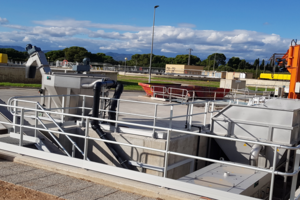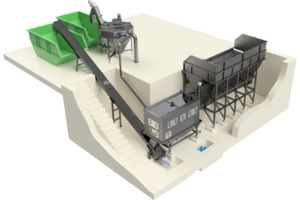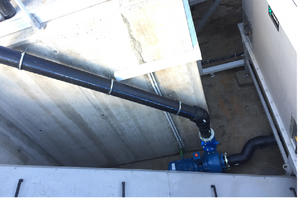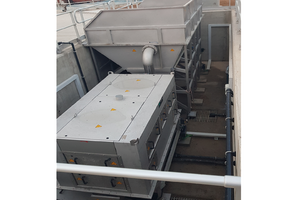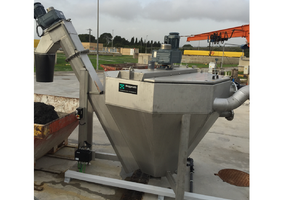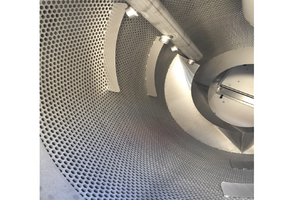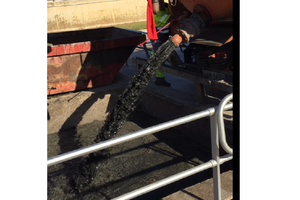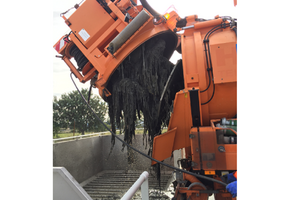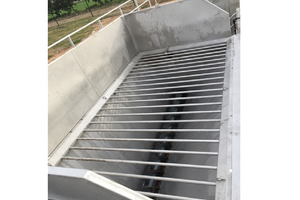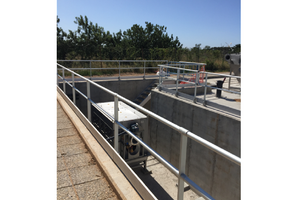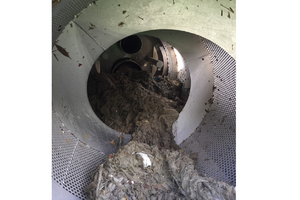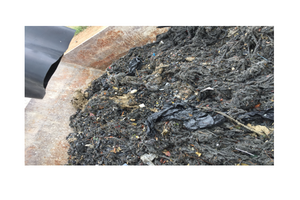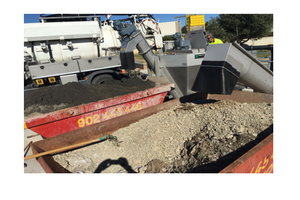Situation
Noggerath® Optimal Sewer Grit Treatment
Cambrils, Spain
In Spain there are mostly combined sewer networks to collect and transport rainwater and wastewater to pumping stations, equalising tanks or sewage treatmen plants. In addition, in many places the sewer networks become silted up, which is why they have to be flushed more frequently. All these media are collected in tankers by the disposal company hired by the region or municipality and - for instance - discharged into a concrete settling pit at the sewage treatment plant. Here, the solids sediment, whereas the highly nitrogen loaded liquid phase is fed in batches to the sewage treatment plant. The solids, a mixture of fibers, fecal sludge, gravel and sand, are removed and stored in containers without further treatment and dewatering, which results in an additional odour nuisance, even some logistic problems to storage certain amount of containers on site, until its dewatering let them be transported. Moreover, some of these solids are also accidentally fed into the sewage treatment plant which causes additional difficulties in operation, e.g. due to clogging of pumps.
Cambrils is a small tourist town, located on the Spanish coast Costa Daurada in Catalonia. The combined sewer networks are linked together in smaller pumping stations, from where the wastewater is pumped to the treatment plant. As a preventive maintenance work, to assure the correct operation of the sewers as well as the pumping stations have to be emptied and cleaned regularly throughout the year by COMAIGUA, as overloading occurs due to sedimentation and increasing loads of dirt caused by increasing tourism. The local sewage treatment plant is operated by COMAIGUA. Aquambiente, a subsidiary of the SUEZ Group, was the company involved in the refurbishment of the plant. In its own interest and on behalf of the water authority and the municipality, it was decided to improve the processes by designing and installing a technically optimal and economically acceptable solution for the faecal sludge and sewer grit receiving. The receiving station is to be built on the local sewage treatment plant. In the end, the company Logistium was commissioned with the planning and purchase of our equipment.
Requirements
Finally, all involved parties decided to design and build a complete sewer grit and sludge receiving station for solid/liquid separation of the waste mixtures from the tankers and subsequent grit washing.
The tank trucks (approx. 8-10 m³ storage capacity) are emptied via a large rear flap opening and should be emptied as quickly as possible.
In a next step, the solids are to be separated from the liquid phase and then deposited in a container.
In a further step, the remaining grit is to be separated from the grit/water mixture and organic matter is to be washed out.
It is necessary to significantly improve the discharge of solids and at the same time to achieve a considerable odor reduction.
Solution
The solution is a 3-stage system with receiving, solid/liquid separation and grit treatment, as done many times in the past by the Aqseptence Group with its strong brand Noggerath, while taking customer requirements into account. The emptying of the trucks and the acceptance of the waste grit and fecal sludge takes place in a stainless steel bunker with a capacity of 8m³. The stainless steel hopper and other machines are arranged at a lower level to allow easy emptying of the trucks. From here, controlled conveyance takes place by means of a shaftless spiral into a rotating horizontal drum screen. Measurement and control devices with appropriate programming and an emergency overflow from the bunker into the drum screen machine ensure the necessary operational safety at this critical point, which requires special attention and solution due to the inhomogeneity of the wagon loads caused by partially very high fiber content. The horizontal drum screen is the core component of the receiving station. Here the separation of solids larger than 10 mm from the remaining sand/ wastewater mixture is affected. The solids are also washed and partially dewatered by the rotation during their travel through the drum, which leads to an additional weight reduction. In addition to grit, also organic material is also washed out, which results in a significant reduction in odor. The solids are conveyed into a container via a shaftless spiral conveyor and deposited there. The pushing design of the spiral conveyor provides additional operational safety, as its open discharge prevents any blockages that otherwise might occur. The sand/ wastewater mixture collected in a hopper below the drum screen is conveyed via a vortex pump to a grit washer, which is located one level higher on the operating platform. Here the grit is separated from the liquid phase and further organic matter is washed out. The grit is conveyed into another container via an integrated spiral conveyor after it is sufficiently washed out. By reducing the remaining organic content to below 3%, the operator is even able to use the extracted sand as a raw material, e.g. in road construction. The remaining waste water is fed into the sewage treatment plant for further treatment.
Technical Data
| Products | Type | Material | Perforation | Capacity | Lenght | Installation angle |
|---|---|---|---|---|---|---|
| Horizontal Noggerath® Drum Screen | RSH-I 3672 | AISI 316L | ø 10 mm | > 50 m³ continuous running | - | - |
| Noggerath® Spiral Conveyor, pushing | SC 360 | AISI 316L | - | - | 10 m | 30° |
| Products | Type | Flow rate | Material | Capacity |
|---|---|---|---|---|
| Noggerath® Bunker | - | - | AISI 316L | 8 m³ |
| Noggerath® Vortex Pump, dry-installed | BWP 22-41 6 VS | max. 35 m³/h | - | - |
| Noggerath® Sand Washer, conical | GWC 900 | - | AISI 316L | 16 l/s |
Control Panel with PLC
Siemens S7-1200 with Touch Panel KTP
